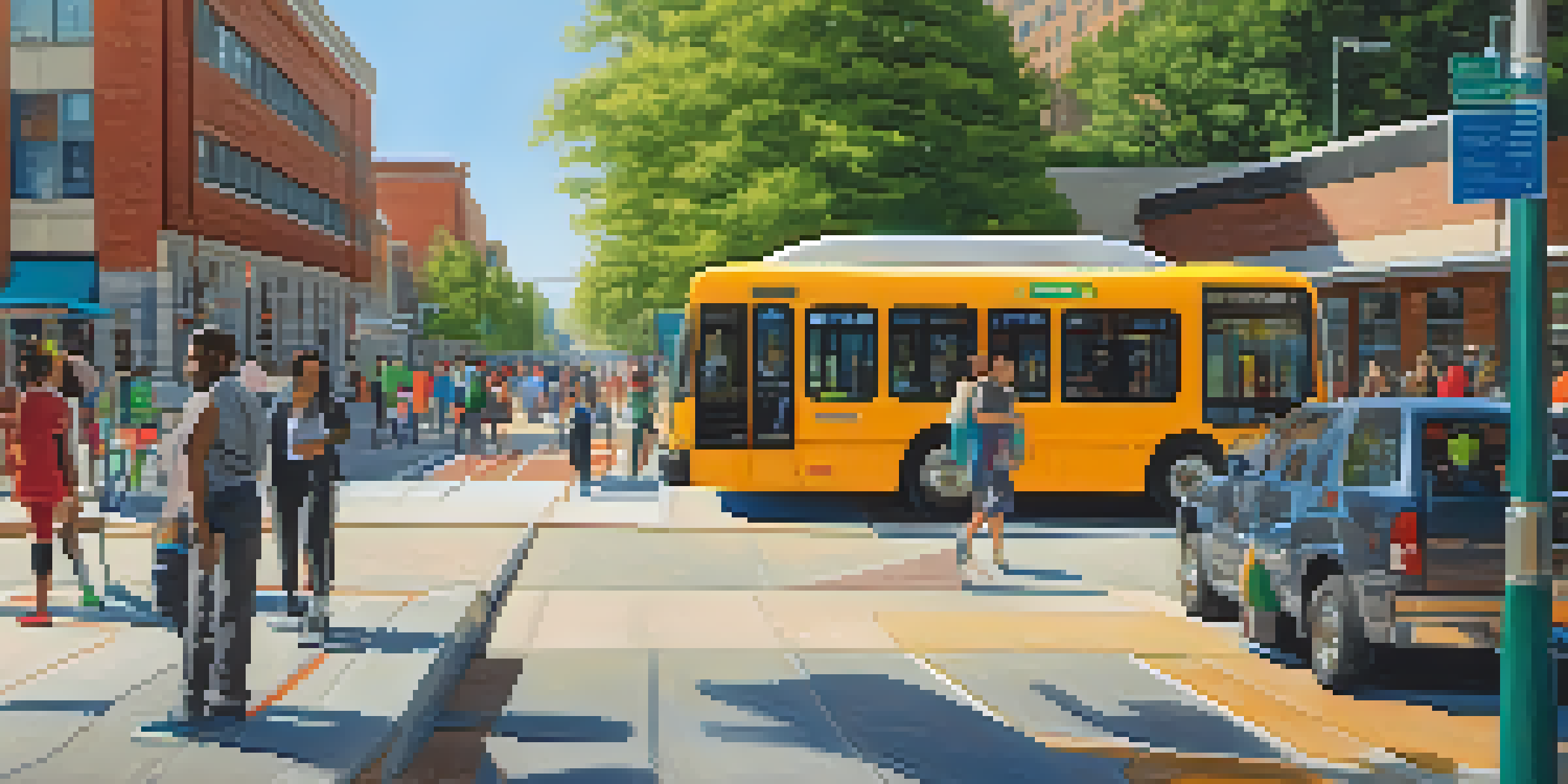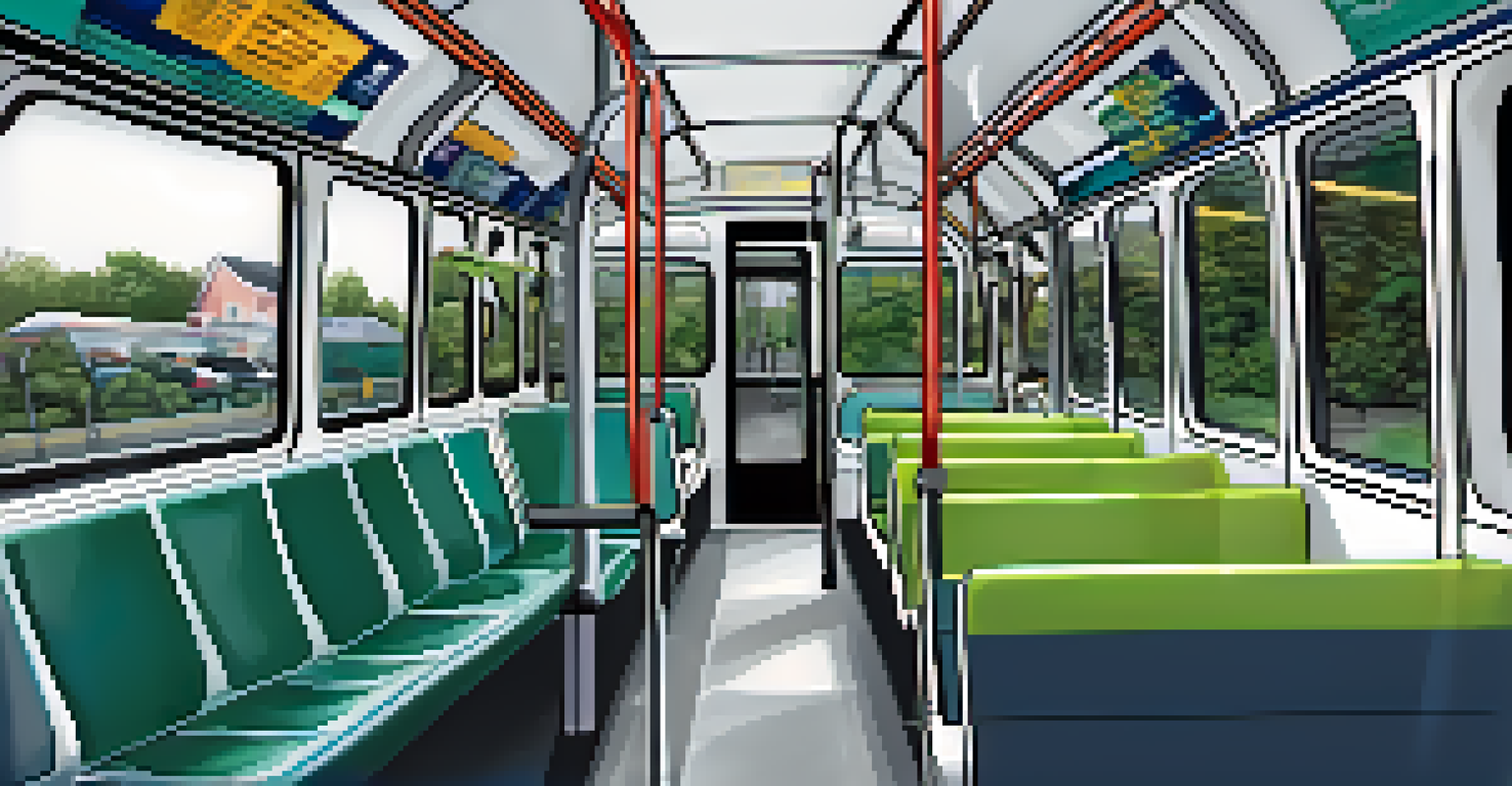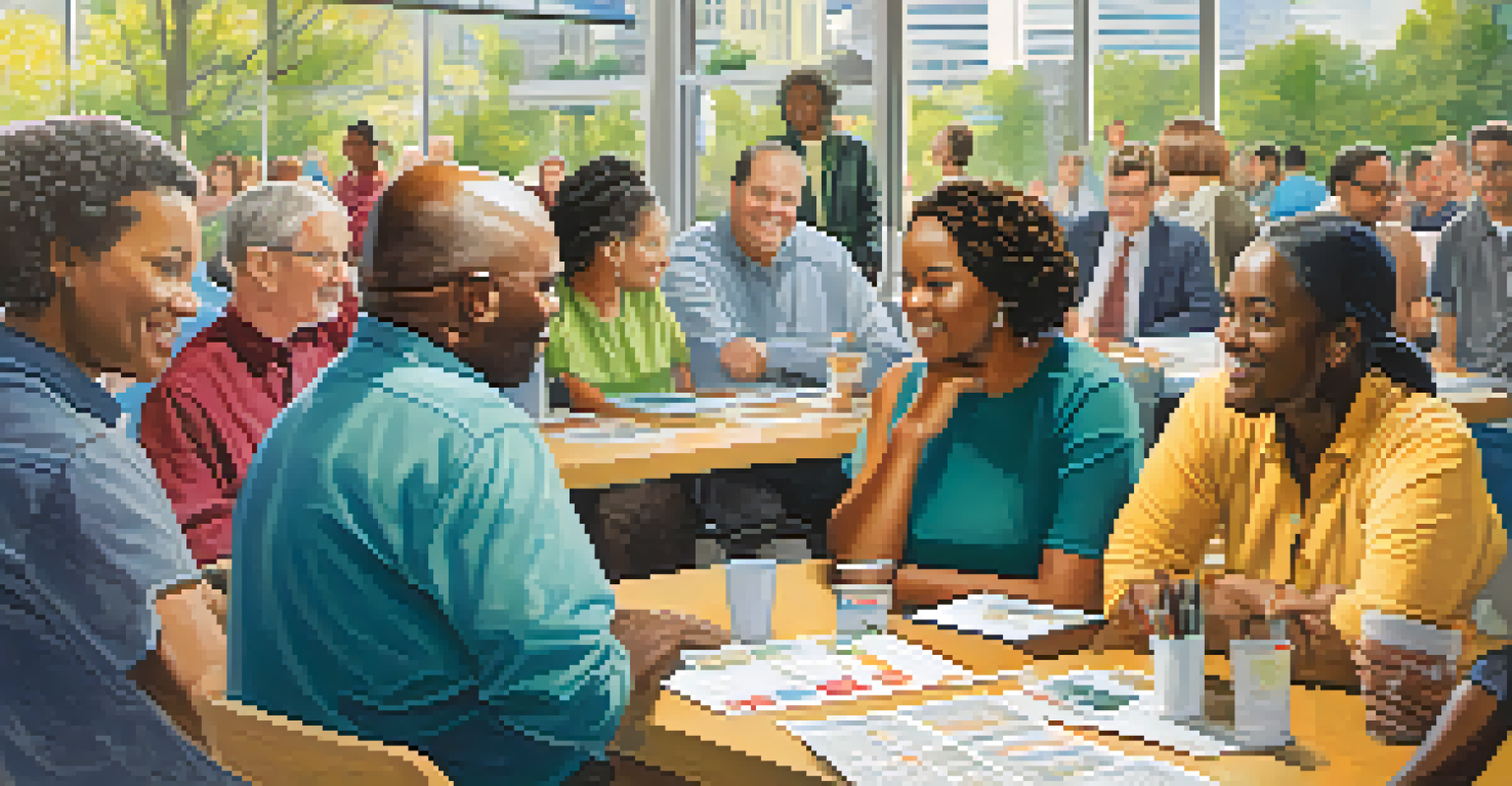Public Transit Accessibility: Raleigh's Inclusivity Efforts

Understanding Public Transit Accessibility in Raleigh
Public transit accessibility is crucial for ensuring everyone can navigate the city with ease. In Raleigh, this means creating a transportation system that accommodates individuals with diverse needs, including those with disabilities. Accessibility goes beyond just physical access; it includes information, services, and support that allow all residents to use public transit confidently.
Accessibility is not a privilege, it's a right.
For many, public transit is not just a convenience but a lifeline. Whether it's getting to work, school, or essential services, having reliable access is essential. Raleigh has recognized this and is actively working to bridge gaps in its transit system to cater to all citizens, regardless of their unique requirements.
By prioritizing accessibility, Raleigh is fostering a sense of community and inclusion. The goal is to ensure that everyone, including those with mobility challenges, can enjoy the freedoms that effective public transit provides. This foundational principle guides the city’s approach to enhancing its transportation network.
Key Features of Raleigh's Public Transit System
Raleigh's public transit system includes several features designed with accessibility in mind. Buses are equipped with ramps and designated seating for those with disabilities, ensuring they can board easily and find a comfortable space. Additionally, real-time tracking apps allow riders to plan their journeys more effectively, providing them with timely information on bus arrivals and service changes.

The city's transit authority also offers paratransit services for individuals who cannot use standard bus services due to their mobility challenges. This on-demand transportation option is essential for fostering independence among individuals who need additional assistance. By expanding services in this way, Raleigh demonstrates its commitment to inclusivity.
Focus on Transit Accessibility
Raleigh aims to create an inclusive public transit system that accommodates individuals with diverse needs, enhancing mobility for all residents.
Moreover, the routes are increasingly designed to connect key areas like hospitals, schools, and job centers, making it easier for all residents to access essential services. These thoughtful design elements contribute to making Raleigh’s public transit system more user-friendly and accessible for everyone.
Community Involvement in Accessibility Initiatives
Community engagement is a vital component of Raleigh's efforts to enhance public transit accessibility. The city regularly holds forums and workshops to gather feedback from residents, particularly those with disabilities. This collaborative approach ensures that the voices of those most affected by transit policies are heard and considered in the decision-making process.
The best way to find yourself is to lose yourself in the service of others.
By involving the community, Raleigh can identify specific barriers and challenges faced by users of public transit. For example, feedback may highlight areas where infrastructure improvements are needed or suggest additional training for transit staff on how to assist riders with disabilities. This open dialogue not only fosters trust but also leads to more effective solutions.
Moreover, partnerships with local advocacy groups play a crucial role in shaping accessibility initiatives. These organizations often provide valuable insights and resources, helping to create a more inclusive transit environment for everyone in the community.
Training and Support for Transit Staff
Training transit staff is essential for ensuring that all riders receive the assistance they need. In Raleigh, employees undergo specialized training programs focused on accessibility awareness and customer service. This training equips staff with the skills to assist individuals with disabilities effectively, making their transit experience more comfortable and enjoyable.
In addition to training, Raleigh emphasizes the importance of empathy and understanding in interactions with passengers. Staff members are encouraged to approach each situation with patience and respect, recognizing the diverse needs of all riders. This human touch can make a significant difference in how individuals perceive and utilize public transit services.
Community Engagement Matters
The city actively involves residents, especially those with disabilities, to gather feedback and improve transit services through collaboration.
Ongoing support and refresher courses are also part of the program to ensure that staff stay informed about best practices and evolving accessibility standards. By committing to continuous education, Raleigh is not just meeting regulatory requirements but is genuinely investing in the quality of service for all its residents.
Innovative Technology Enhancing Accessibility
Technology plays a pivotal role in making public transit more accessible in Raleigh. The integration of mobile apps allows riders to access real-time information, making it easier for them to navigate the transit system. These digital tools can provide details on bus routes, schedules, and even alerts about service disruptions, empowering users to plan their trips more effectively.
Furthermore, features like audio announcements and visual displays on buses help cater to riders with sensory impairments. These enhancements ensure that everyone, regardless of their abilities, receives the information they need to travel safely. By leveraging technology, Raleigh is breaking down barriers and creating a more inclusive transit environment.
The city is also exploring future technologies, such as automated vehicles and smart infrastructure, to further enhance accessibility. These innovations could potentially transform the way public transit operates, providing even more options for residents with varying mobility needs.
Future Plans for Improved Accessibility in Raleigh
Looking ahead, Raleigh has ambitious plans to further improve public transit accessibility. The city is committed to updating existing infrastructure to meet modern accessibility standards and is exploring new routes that better serve underserved communities. This proactive approach ensures that everyone can benefit from the public transit system.
In addition to physical improvements, Raleigh is also focusing on policy changes that promote inclusivity. This includes revisiting fare structures to make public transit more affordable for low-income individuals, particularly those with disabilities. By addressing economic barriers, Raleigh aims to empower all residents to use public transit without financial strain.
Embracing Innovative Technology
Raleigh leverages technology, such as mobile apps and real-time information, to enhance accessibility and streamline the transit experience for users.
Community engagement remains a cornerstone of these future plans. Raleigh intends to keep the conversation going with residents, ensuring that their needs and preferences shape the ongoing development of the transit system. This collaborative approach is crucial for creating a transit network that truly serves everyone.
Measuring Success and Gathering Feedback
Evaluating the success of accessibility initiatives is an ongoing process for Raleigh. The city employs various metrics to assess how effectively public transit meets the needs of all residents. Surveys, ridership statistics, and user feedback play a crucial role in understanding the impact of these initiatives and identifying areas for improvement.
Moreover, Raleigh encourages riders to share their experiences and suggestions through dedicated channels. This open feedback loop allows the city to adapt and refine its strategies continually. By listening to the community, Raleigh can ensure that its efforts remain relevant and effective.

As the city implements changes and measures their outcomes, it remains committed to transparency. Regular reports and updates on progress will keep the community informed and involved in the journey toward a more accessible public transit system. Together, Raleigh and its residents can celebrate successes while addressing challenges head-on.